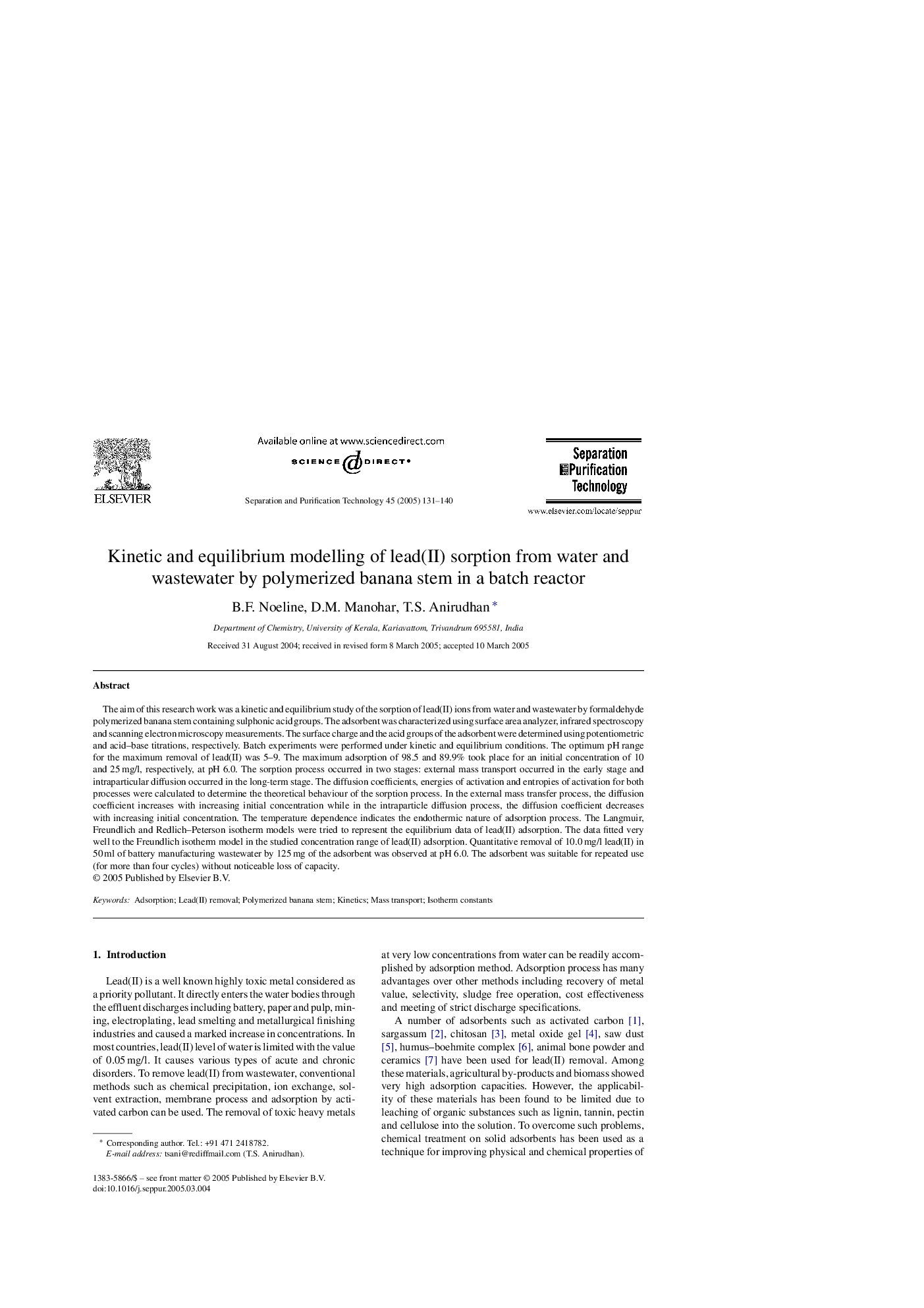| Article ID | Journal | Published Year | Pages | File Type |
|---|---|---|---|---|
| 10390037 | Separation and Purification Technology | 2005 | 10 Pages |
Abstract
The aim of this research work was a kinetic and equilibrium study of the sorption of lead(II) ions from water and wastewater by formaldehyde polymerized banana stem containing sulphonic acid groups. The adsorbent was characterized using surface area analyzer, infrared spectroscopy and scanning electron microscopy measurements. The surface charge and the acid groups of the adsorbent were determined using potentiometric and acid-base titrations, respectively. Batch experiments were performed under kinetic and equilibrium conditions. The optimum pH range for the maximum removal of lead(II) was 5-9. The maximum adsorption of 98.5 and 89.9% took place for an initial concentration of 10 and 25Â mg/l, respectively, at pH 6.0. The sorption process occurred in two stages: external mass transport occurred in the early stage and intraparticular diffusion occurred in the long-term stage. The diffusion coefficients, energies of activation and entropies of activation for both processes were calculated to determine the theoretical behaviour of the sorption process. In the external mass transfer process, the diffusion coefficient increases with increasing initial concentration while in the intraparticle diffusion process, the diffusion coefficient decreases with increasing initial concentration. The temperature dependence indicates the endothermic nature of adsorption process. The Langmuir, Freundlich and Redlich-Peterson isotherm models were tried to represent the equilibrium data of lead(II) adsorption. The data fitted very well to the Freundlich isotherm model in the studied concentration range of lead(II) adsorption. Quantitative removal of 10.0Â mg/l lead(II) in 50Â ml of battery manufacturing wastewater by 125Â mg of the adsorbent was observed at pH 6.0. The adsorbent was suitable for repeated use (for more than four cycles) without noticeable loss of capacity.
Keywords
Related Topics
Physical Sciences and Engineering
Chemical Engineering
Filtration and Separation
Authors
B.F. Noeline, D.M. Manohar, T.S. Anirudhan,
